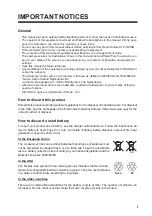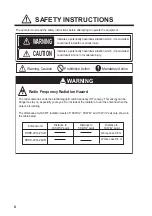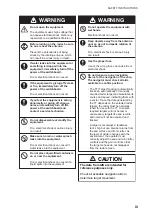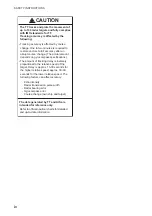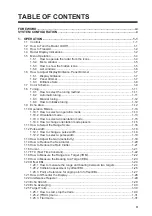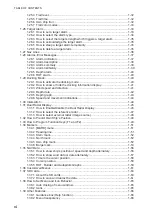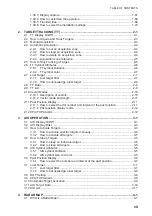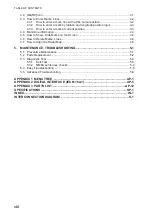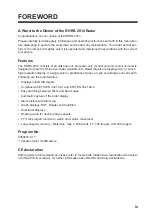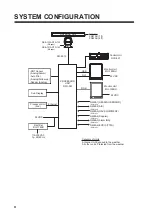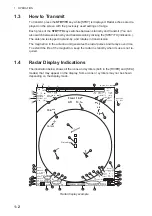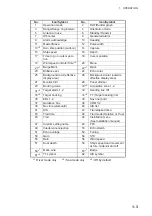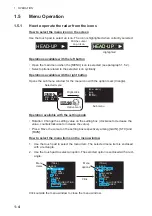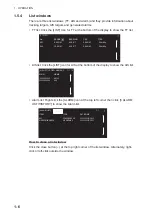
SAFETY INSTRUCTIONS
iii
WARNING
WARNING
WARNING
Do not open the equipment.
The equipment uses high voltage that
can cause electrical shock. Refer any
repair work to a qualified technician.
Before turning on the radar, be sure
no one is near the antenna.
Prevent the potential risk of being
struck by the rotating antenna, which
can result in serious injury or death.
If water leaks into the equipment or
something is dropped into the
equipment, immediately turn off the
power at the switchboard.
Fire or electrical shock can result.
If the equipment is giving off smoke
or fire, immediately turn off the
power at the switchboard.
Fire or electrical shock can result.
If you feel the equipment is acting
abnormally or giving off strange
noises, immediately turn off the
power at the switchboard and
contact a service technician.
Do not disassemble or modify the
equipment.
Fire, electrical shock or serious injury
can result.
Make sure no rain or water splash
leaks into the equipment.
Fire or electrical shock can result if
water leaks into the equipment.
Do not place liquid-filled containers
on or near the equipment.
Fire or electrical shock can result if a
liquid spills into the equipment.
Do not operate the equipment with
wet hands.
Electrical shock can result.
Keep objects away from the antenna
unit, so as not to impede rotation of
the antenna.
Fire, electrical shock or serious injury
can result.
Use the proper fuse.
Use of the wrong fuse can cause fire or
electrical shock.
CAUTION
The data from AIS are intended for
reference purposes only.
Check all available navigation aids to
determine target movement.
Do not depend on one navigation
device for the navigation of the ship.
The navigator must check all aids
available to confirm position.
- The TT (Target Tracking) automatically
tracks an automatically or manually
acquired radar target and calculates its
course and speed, indicating them with
a vector. Since the data generated by
the TT depends on the selected radar
targets, the radar must be optimally
tuned for use with the TT, to ensure
required targets will not be lost or
unnecessary targets like sea returns
and noise will not be acquired and
tracked.
- A target is not always a landmass,
reef, ship, but can also be returns from
the sea surface and from clutter. As
the level of clutter changes with the
environment, the operator must
correctly adjust the sea and rain clutter
controls and the gain control so that
the target echoes do not disappear
from the radar screen.



